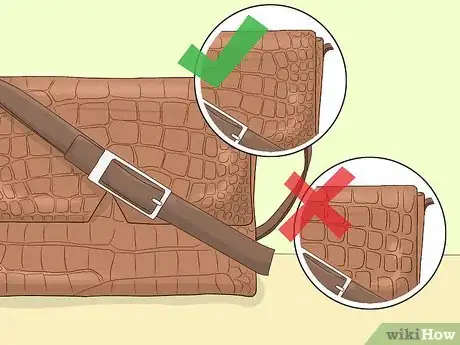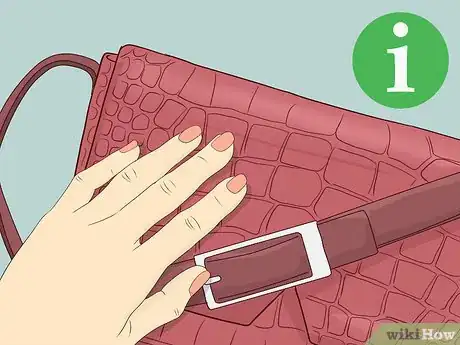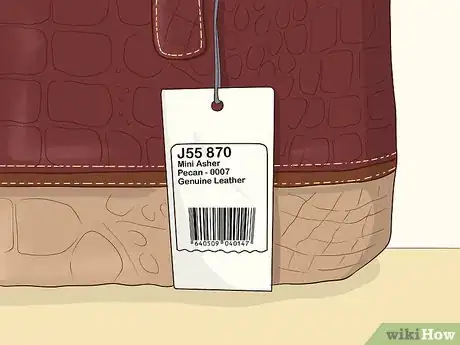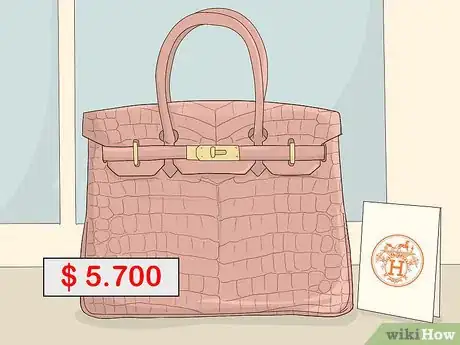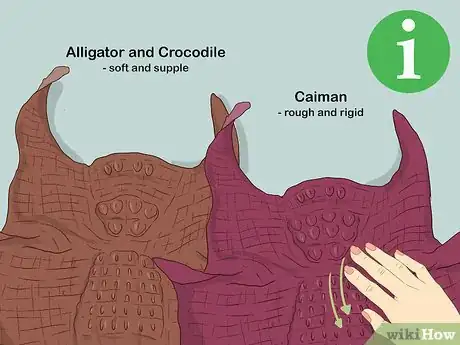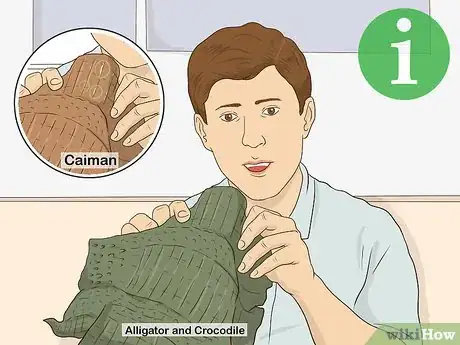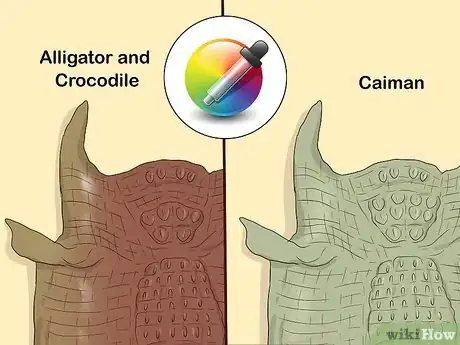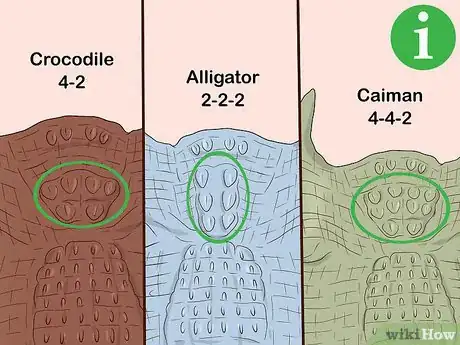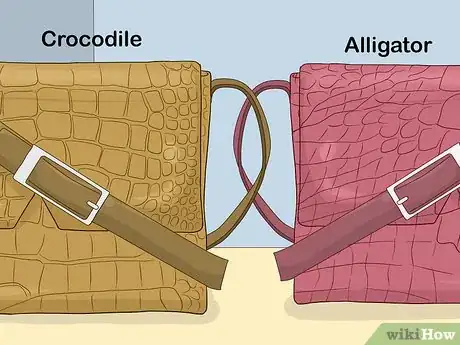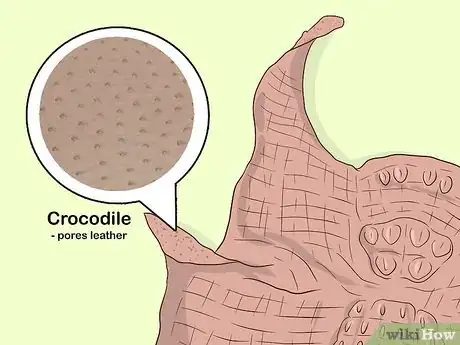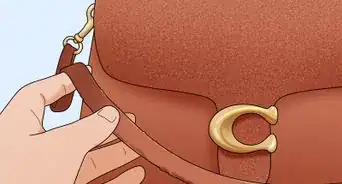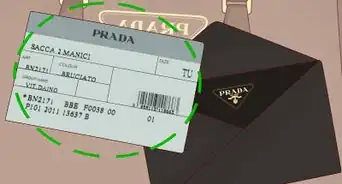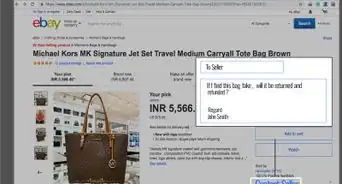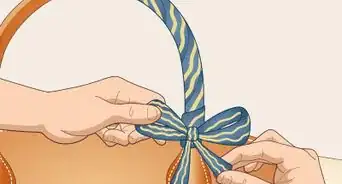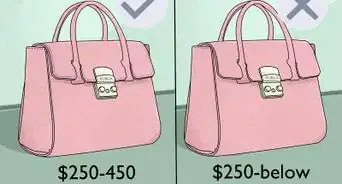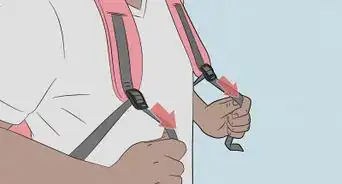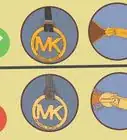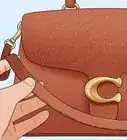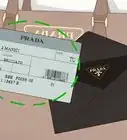This article was co-authored by wikiHow staff writer, Sophia Latorre. Sophia Latorre is a Content Manager on the wikiHow team. Before joining wikiHow, Sophia worked as a technical editor and was published in six International Energy Agency (IEA) Wind Annual Reports. Now, she writes, edits, and reviews articles for the wikiHow Content Team, working to make the content as helpful as possible for readers worldwide. Sophia holds a BA in English from Colorado State University.
This article has been viewed 51,661 times.
Learn more...
If you’re in the market for a genuine crocodile handbag you may wish to know how to tell crocodile leather from stamped or embossed leather. Additionally, you might be wondering how to tell the difference between crocodile and alligator or caiman. Don’t worry, you don’t have to be an expert to identify crocodile leather. Spend some time inspecting the leather and the distribution of scales to help you determine whether or not the handbag is made from genuine crocodile.
Steps
Determining if the Leather is Stamped or Embossed
-
1Be wary of an abrupt transition in the size and shape of the scales. Crocodiles have scales that gradually transition from large, square shapes on their bellies to smaller, more rounded shapes on their sides. If the change is abrupt, if it switches more than twice in a single panel, or if there is no transition, the bag is likely made from stamped leather.[1]
-
2Look for an irregular grain pattern. Look closely and carefully at the grain pattern on the handbag. The pattern of the grain on a crocodile leather handbag will have some irregularities, as each scale will be of a slightly different shape and size. There may also be small, uneven lines present at the base of the scales. If the grain pattern of the scales is very uniform, it has probably been stamped on.Advertisement
-
3Determine if it is crocodile by the feel and flexibility of the bag. Run your fingers over the bag and pay attention to the softness and flexibility of the leather. Crocodile bags are soft, smooth, and supple. Stamped or embossed leather bags are more compact and rigid than genuine crocodile leather.[2]
-
4Examine the tag to find out if the handbag is crocodile leather. It’s not enough for the tag to say “genuine leather” as this won’t tell you what kind of leather it is, and genuine leather is actually the lowest quality leather. Instead, look for a tag that states that the handbag has been crafted from crocodile.[3]
- The tag may even say “full-grain leather,” meaning the grain of the hide has not been broken up.
-
5Expect to pay a considerable price. Designer crocodile handbags are quite expensive―a Hermès Birkin crocodile handbag can cost upwards of $50,000![4] Less prestigious brands sell crocodile handbags for a minimum of $2,000-$4,000, depending on the size and style. If someone is trying to sell you a crocodile handbag for less than a few thousand dollars, it is almost certainly a fake.[5]
-
6Ask the seller for paperwork proving the crocodile handbag is genuine. If you are buying a crocodile handbag from a reputable seller, they should have no problem answering all of your questions and providing you with paperwork that proves the bag was made from crocodile hide. If the seller refuses to answer your questions or provide you with paperwork, they are likely selling embossed or stamped leather bags.[6]
Differentiating Between Crocodile, Alligator, and Caiman
-
1Identify alligator and crocodile leather by its softness. Both crocodile and alligator leather are soft and supple. Caiman leather, however, is more rough and rigid. Simply run your fingers along the leather to determine if it is soft (meaning it’s alligator or crocodile) or rough (meaning it’s likely caiman).[7]
-
2Look for cracks to identify caiman leather. Bend the leather to determine its flexibility. Alligator and crocodile leather are more pliable than caiman. If you see lots of light cracks when you bend the leather, it is probably made from caiman, which is the lowest quality reptile leather.[8]
-
3See if the dye is absorbed smoothly and uniformly into the leather. Alligator and crocodile hides are softer than caiman, so the dye is absorbed smoothly and uniformly into the leather. There shouldn’t be any areas that are darker or lighter than others. Caiman leather that has been dyed is likely to look blotchy due to the rougher texture.[9]
-
4Look for a 4-2 pattern of horned bumps. If the leather used is from the back, rather than the belly, of the animal, you can determine which reptile it came from based on the number and pattern of horned bumps present. In addition to the flat scales, there will be a few horned bumps in the leather. Crocodiles have a 4-2 pattern of bumps (i.e. one row of four bumps and one row of two bumps).[10]
- Alligators have a 2-2-2 pattern of bumps (three rows of two), and caiman have a 4-4-2 pattern of bumps (two rows of four, one row of two).
-
5Note a gradual transition of the size and shape of scales. The scales of an alligator suddenly transition from wide, square shapes to small, round shapes (meaning one column has large scales while the next has small scales). On a crocodile, the transition is more gradual as the scales steadily become smaller and more rounded.[11]
-
6Look for pores to distinguish alligator leather from crocodile leather. If the back side of the animal was used, you should look to see if there are pores (holes) in the horned scales. Crocodiles, unlike alligators, have pores in their scales from the small hairs that cover their bodies.[12]
Warnings
- It can be nearly impossible, even for experts, to determine whether something was made from an alligator belly or a crocodile belly due to their similarities.[13]⧼thumbs_response⧽
References
- ↑ http://www.gleni.it/difference-crocodile-leather.html
- ↑ http://www.gleni.it/difference-crocodile-leather.html
- ↑ http://www.businessinsider.com/leather-buying-guide-2014-12
- ↑ https://fortune.com/2015/06/23/hermes-birkin-investment/
- ↑ http://www.philstar.com/fashion-and-beauty/2013/03/20/921623/crocodile-skin-101
- ↑ http://www.gleni.it/difference-crocodile-leather.html
- ↑ http://www.gleni.it/difference-crocodile-alligator-caiman-leather.html
- ↑ http://www.gleni.it/difference-crocodile-alligator-caiman-leather.html
- ↑ http://www.gleni.it/difference-crocodile-alligator-caiman-leather.html
